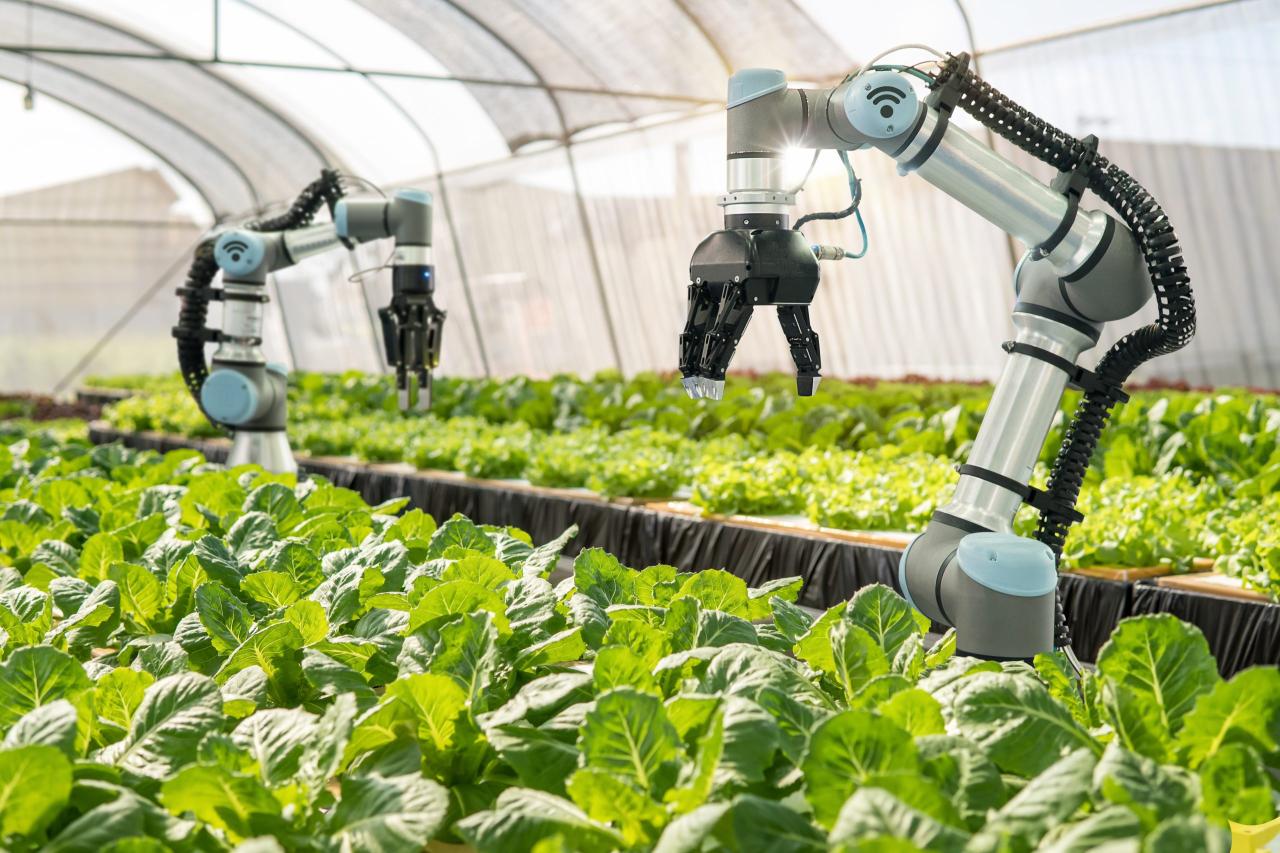

The Role of AI in Smart Agriculture and Food Production
The world’s population is projected to reach 9.7 billion by 2050, putting immense pressure on the agriculture industry to increase food production while reducing its environmental footprint. Artificial intelligence (AI) is emerging as a game-changer in this quest, transforming the way we grow, harvest, and produce food. In this article, we’ll explore the role of AI in smart agriculture and food production, highlighting its benefits, applications, and potential challenges.
The Challenges in Agriculture and Food Production
Agriculture is one of the most crucial sectors of the global economy, employing over 2 billion people worldwide. However, the industry faces several challenges, including:
- Climate Change: Rising temperatures, changing weather patterns, and increased frequency of natural disasters affect crop yields, quality, and distribution.
- Water Scarcity: Agriculture is the largest user of freshwater, and the sector’s water footprint is expected to increase by 19% by 2025.
- Soil Degradation: Soil erosion, salinization, and nutrient depletion threaten long-term soil health and fertility.
- Food Waste: One-third of all food produced globally is lost or wasted, amounting to approximately 1.3 billion tonnes per year.
- Yield gap: The difference between potential and actual crop yields results in significant productivity and economic losses.
The Rise of Smart Agriculture
To address these challenges, smart agriculture, also known as precision agriculture, has emerged as a solution. This approach leverages advanced technologies, such as AI, IoT, robotics, and data analytics, to optimize crop growth, reduce waste, and improve resource allocation. AI, in particular, is playing a vital role in transforming the agricultural sector by:
- Enhancing Decision-Making: AI algorithms analyze vast amounts of data, including weather patterns, soil health, and crop conditions, to provide farmers with actionable insights and recommendations.
- Predicting Crop Yields: AI-powered models predict crop yields, enabling farmers to make informed decisions about harvesting, pricing, and supply chain management.
- Automating Farming Operations: AI-controlled autonomous farming equipment, such as drones and tractors, optimize farming practices, reduce labor costs, and improve efficiency.
- Monitoring and Managing Resources: AI-enabled sensors and monitoring systems track and manage water, fertilizer, and pesticide usage, reducing waste and environmental impact.
- Reducing Food Waste: AI-powered logistics and supply chain management systems identify and eliminate inefficiencies, minimizing food waste throughout the production and distribution process.
Applications of AI in Agriculture and Food Production
AI is being applied across various stages of agriculture and food production, including:
- Crop Monitoring and Management: AI-powered satellite imaging, drones, and sensors monitor crop health, growth, and development, enabling targeted interventions and optimized resource allocation.
- Livestock Management: AI-powered systems monitor animal health, behavior, and nutrition, improving yields, reducing disease outbreaks, and enhancing animal welfare.
- Irrigation and Water Management: AI-optimized irrigation systems minimize water waste, reduce energy consumption, and ensure optimal water usage.
- Post-Harvest Management: AI-powered sorting and grading systems optimize the quality and quantity of produce, reducing waste and improving supply chain efficiency.
- Food Processing and Manufacturing: AI-enabled automation and quality control systems improve product quality, consistency, and safety, while reducing energy consumption and waste.
Benefits of AI in Agriculture and Food Production
The integration of AI in agriculture and food production offers numerous benefits, including:
- Increased Efficiency: AI optimizes farming practices, reducing waste, and improving productivity.
- Improved Yields: AI-powered precision agriculture and crop monitoring lead to higher yields and better crop quality.
- Enhanced Sustainability: AI-driven resource management and waste reduction strategies promote environmental sustainability.
- Reduced Costs: AI-enabled automation, data analysis, and decision-making reduce labor costs, energy consumption, and resource waste.
- Improved Food Safety and Quality: AI-powered quality control systems ensure safer, healthier, and more consistent food products.
Challenges and Limitations of AI in Agriculture and Food Production
While AI has the potential to revolutionize agriculture and food production, several challenges and limitations need to be addressed, including:
- Data Quality and Integration: High-quality, integrated data is essential for AI-driven insights, but data collection, processing, and analysis can be complex and resource-intensive.
- Infrastructure and Connectivity: Wide-scale adoption of AI in agriculture requires reliable, high-speed internet connectivity, which is often lacking in rural areas.
- Cybersecurity: The increased use of IoT devices and data analysis creates vulnerabilities to cyber threats, which can compromise sensitive data and compromise food safety.
- Regulatory Frameworks: Existing regulations may not be equipped to handle the emergence of AI in agriculture, requiring updated policies and frameworks.
- Education and Training: Farmers, agricultural workers, and food processors need training and education to effectively utilize AI-powered tools and systems.
Conclusion
The role of AI in smart agriculture and food production is transformative, offering numerous benefits, including increased efficiency, improved yields, enhanced sustainability, and reduced costs. While challenges and limitations exist, the potential of AI to address the pressing issues in agriculture and food production is undeniable. As the global population continues to grow, it is essential to adopt AI-driven solutions to ensure a food-secure future for generations to come.




